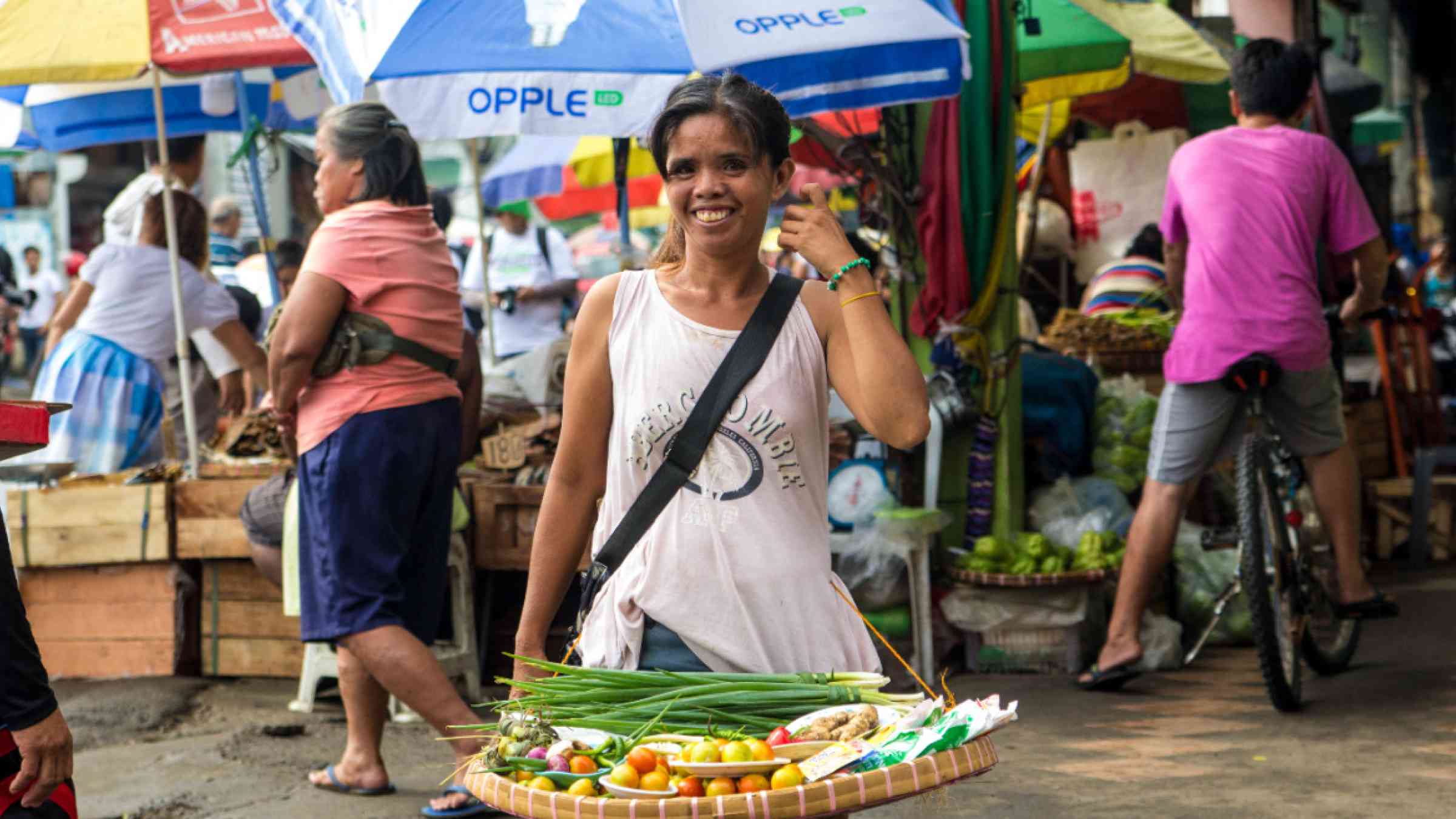Hazard and disaster analysis for business resilience (HANDA) system

In any disaster, there is widespread confusion, breakdown of communication, and disorder. Such contexts make it challenging for any one entity to respond to the extensive needs of communities and businesses. While this is true worldwide, in the Philippines, experiences such as Typhoon Yolanda drove home the impact of the lag in Government responses to the needs of businesses and establishments.
To address this, the Philippine Disaster Resilience Foundation (PDRF), a CBi Member Network, launched their Business-led Emergency Operations Centre (BEOC). It monitors weather events and sends warning messages thanks to the Hazard and Disaster Analysis for Business Resilience (HANDA) system. The platform shows current information including areas with reported flooding, casualties, number of people missing, and more.
The HANDA platform
Behind the scenes, what informs PDRF's operations is a Disaster Information Management (DIM) system which integrates all reliable, accurate, and timely information on disaster management. The DIM System employs the customized ArcGIS Online platform from the Environmental Systems Research Institute (ESRI), the HANDA.
This system serves as a unified platform that eliminates the waiting time and provides focused efforts that enable member companies to assess and reduce their risk prior to potential disasters. The platform also allows these companies to plan relief and rehabilitation efforts that complement business continuity plans and programs.
"The HANDA training enlightened us about systems that we can use to identify all hazards within our area of responsibility," said Carl Rensel Quilao, Safety Officer for Aboitiz InfraCapital Inc., after participating in a HANDA training facilitated by PDRF. "With this capability, we can help not only our own operations but also all our stakeholders including our locators and the local government to prepare for the upcoming or monitored hazards."
Aboitiz leverages the HANDA platform to optimize hazard monitoring within their operations. Quilao added, "The HANDA platform has given us the capability to [closely monitor] the hazards that pose a threat to our operations. [It helps us] determine the gravity of the effect of the hazard and [gauge the level of preparedness required]. It helped us when Typhoon Carina and Typhoon Butchoy entered the [Philippine Area of Responsibility], as we monitored the distance of the typhoons from our estate and we were able to prevent major damage from [occurring]."
Some of the practical applications of a system such as HANDA include:
- Plotting evacuation sites along with the deployment route plan for the distribution of relief supplies.
- Identifying areas prone to lahar (a violent type of mudflow or debris flow coming down the slopes of a volcano) and assessing the accessibility of designated evacuation sites.
- Estimating times between sites key to emergency response, to optimize time management.
- Using the susceptibility map generated by HANDA to identify hazards and refine on-the-ground strategies in the case of an emergency.
Using HANDA for El Niño and La Niña monitoring and response
PDRF recently developed the El Niño dashboard, a comprehensive tool designed to effectively manage El Niño events. This platform serves as a one-stop shop, offering real-time data on dam levels and drought assessments. It integrates forecasts and information from the Philippine Atmospheric, Geophysical, and Astronomical Services Administration (PAGASA). It also provides insights into private sector initiatives, promoting a unified approach to tackling the challenges posed by El Niño. This tool supports a whole-of-nation strategy for resilience and response to the impacts of El Niño.
The La Niña Dashboard, linked to the El Niño Dashboard, serves as a crucial tool for monitoring and assessing the onset of La Niña events. This comprehensive tool integrates forecasts of La Niña occurrences, with forecast data sourced from PAGASA. It features detailed susceptibility maps that highlight areas at risk, enabling targeted risk management and preparation. Additionally, the dashboard provides up-to-date monthly rainfall forecasts to help anticipate potential impacts and plan accordingly. Real-time dam level data is also included, facilitating effective monitoring of water resources.
The power of having the right information at the right time does not just enable PDRF to mobilize resources to better prepare for extreme weather events such as typhoons, but also respond to emergencies quickly and coordinating actions by the private sector. What's more, HANDA has the capacity to monitor weather systems regionally or even globally, making PDRF a key partner for improved disaster preparedness on the world stage.